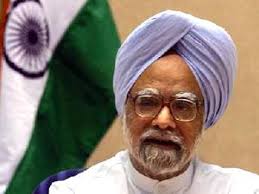(Malaysiakini) Malaysia remains in 56th place in Transparency International's (TI) latest Corruption Perceptions Index, but its score has dropped from 4.5 to 4.4.
The score also indicates that the country has failed to meet the National Key Result Area in the Government Transformation Programme, which targets an improvement from 4.5 to 4.9 out of the maximum 10 points.
This ranking follows a plunge of 0.6 points and a massive slide of nine places in country ranking in 2009 compared to the year before.
Singapore drew with New Zealand and Denmark in top spot among the 178 countries surveyed.
 Releasing the index this afternoon, TI Malaysia said that, while some steps have been taken in the right direction, problems still arise in implementation.
Releasing the index this afternoon, TI Malaysia said that, while some steps have been taken in the right direction, problems still arise in implementation.
The president, Paul Low, described the drop in score as “statistically not significant”.
Secretary-general Ngooi Chu-Ing said that most glaring is a general perception of lack of political will to fight corruption.
"For example, there are glaring items of grave concern, such as generally no 'big fish' being bought to book, and poor progress in identifying and prosecuting culpable persons in the Port Klang Free Zone fiasco," he noted.
He also cited the 'no further action' decision by the Attorney-General against those allegedly implicated in tampering with the judicial appointments, and the "continuing and snowballing practice of awarding mega projects".
The score also indicates that the country has failed to meet the National Key Result Area in the Government Transformation Programme, which targets an improvement from 4.5 to 4.9 out of the maximum 10 points.
This ranking follows a plunge of 0.6 points and a massive slide of nine places in country ranking in 2009 compared to the year before.
Singapore drew with New Zealand and Denmark in top spot among the 178 countries surveyed.
 Releasing the index this afternoon, TI Malaysia said that, while some steps have been taken in the right direction, problems still arise in implementation.
Releasing the index this afternoon, TI Malaysia said that, while some steps have been taken in the right direction, problems still arise in implementation.The president, Paul Low, described the drop in score as “statistically not significant”.
Secretary-general Ngooi Chu-Ing said that most glaring is a general perception of lack of political will to fight corruption.
"For example, there are glaring items of grave concern, such as generally no 'big fish' being bought to book, and poor progress in identifying and prosecuting culpable persons in the Port Klang Free Zone fiasco," he noted.
He also cited the 'no further action' decision by the Attorney-General against those allegedly implicated in tampering with the judicial appointments, and the "continuing and snowballing practice of awarding mega projects".
As 40 percent of the index is drawn from perceptions of local residents and the business community, the CPI also correlates to foreign direct investment performance.
 To improve Malaysia's standing, TI-Malaysia recommended that the Malaysian Anti-Corruption Commission be given prosecutory powers, and for the commission to report to parliamentary committees.
To improve Malaysia's standing, TI-Malaysia recommended that the Malaysian Anti-Corruption Commission be given prosecutory powers, and for the commission to report to parliamentary committees.
It also recommended regulation on political party funding and the public disclosure of assets of politicians.
"At present cabinet minister declare their assets to the prime minister but the information is not made public.
"We also urge for freedom of information (with) the repeal of the Official Secrets Act and the Printing Presses and Publications Act," Ngooi said.
New Zealand model
Low said that failure to address corruption will halt the government's efforts to move up the ladder to high income status, as there is a direct link between corruption and per capita income.
He added that efforts through the Government Transformation Programme have not yet borne fruit as "it will take some time before the benefits are translated so people would begin to feel it."
The index, which is based on external surveys by organisations including the Asian Development Bank and the World Economic Forum, has a two-year lag.
 Low pointed out that Malaysia would do well to follow Indonesia's lead in terms of political will against corruption, as is evident with the prosecution of many top officials.
Low pointed out that Malaysia would do well to follow Indonesia's lead in terms of political will against corruption, as is evident with the prosecution of many top officials.
The effectiveness of the Indonesian equivalent of MACC has had much impact on public perception, he said, with MACC's prosecution success rate at only 68 percent.
Comparatively, Singapore and Hong Kong's anti-graft units have a 90 percent success rate, while New Zealand does not even have an such a body.
"I was told that (NZ topped the list) because the society itself sanctions corrupt people. This is something the Malaysian society needs to learn," he said.
 To improve Malaysia's standing, TI-Malaysia recommended that the Malaysian Anti-Corruption Commission be given prosecutory powers, and for the commission to report to parliamentary committees.
To improve Malaysia's standing, TI-Malaysia recommended that the Malaysian Anti-Corruption Commission be given prosecutory powers, and for the commission to report to parliamentary committees. It also recommended regulation on political party funding and the public disclosure of assets of politicians.
"At present cabinet minister declare their assets to the prime minister but the information is not made public.
"We also urge for freedom of information (with) the repeal of the Official Secrets Act and the Printing Presses and Publications Act," Ngooi said.
New Zealand model
Low said that failure to address corruption will halt the government's efforts to move up the ladder to high income status, as there is a direct link between corruption and per capita income.
He added that efforts through the Government Transformation Programme have not yet borne fruit as "it will take some time before the benefits are translated so people would begin to feel it."
The index, which is based on external surveys by organisations including the Asian Development Bank and the World Economic Forum, has a two-year lag.
 Low pointed out that Malaysia would do well to follow Indonesia's lead in terms of political will against corruption, as is evident with the prosecution of many top officials.
Low pointed out that Malaysia would do well to follow Indonesia's lead in terms of political will against corruption, as is evident with the prosecution of many top officials.The effectiveness of the Indonesian equivalent of MACC has had much impact on public perception, he said, with MACC's prosecution success rate at only 68 percent.
Comparatively, Singapore and Hong Kong's anti-graft units have a 90 percent success rate, while New Zealand does not even have an such a body.
"I was told that (NZ topped the list) because the society itself sanctions corrupt people. This is something the Malaysian society needs to learn," he said.

 KUALA LUMPUR, Oct 26 — A total of 13 investigations papers (KS), 14 preliminary investigation papers (KPA) and five examination and consultation (KPP) papers have been initiated following the release of the 2009 Auditor-General’s report, said the Malaysian Anti-Corruption Commission (MACC) today.
KUALA LUMPUR, Oct 26 — A total of 13 investigations papers (KS), 14 preliminary investigation papers (KPA) and five examination and consultation (KPP) papers have been initiated following the release of the 2009 Auditor-General’s report, said the Malaysian Anti-Corruption Commission (MACC) today. By Stephanie Sta Maria - Free Malaysia Today
By Stephanie Sta Maria - Free Malaysia Today

 By Stephanie Sta Maria - Free Malaysia Today
By Stephanie Sta Maria - Free Malaysia Today
 The contracts stipulated that the ministry would pay 75% of the total price upon delivery of the equipment and the balance once it was tested and accredited.
The contracts stipulated that the ministry would pay 75% of the total price upon delivery of the equipment and the balance once it was tested and accredited.
 Prime Minister Najib Razak on Oct 21 at the Umno general assembly told his party delegates "... kewarganegaraan Malaysia pada dasarnya bukan lagi bersifat sama rata". This country does not have equal citizenship.
Prime Minister Najib Razak on Oct 21 at the Umno general assembly told his party delegates "... kewarganegaraan Malaysia pada dasarnya bukan lagi bersifat sama rata". This country does not have equal citizenship.  Hence the claim by Liew Kee Sin, a Tan Sri and a tycoon, that Chinese had thrived under NEP. But only for a small handful of Chinese. Liew, the SP Setia president-cum-CEO, raised hackles with his statement at the Chinese Economic Congress organized by MCA on Aug 14. His talk was titled 'Malay and Chinese collaboration to achieve NEM'.
Hence the claim by Liew Kee Sin, a Tan Sri and a tycoon, that Chinese had thrived under NEP. But only for a small handful of Chinese. Liew, the SP Setia president-cum-CEO, raised hackles with his statement at the Chinese Economic Congress organized by MCA on Aug 14. His talk was titled 'Malay and Chinese collaboration to achieve NEM'.  Occurring some years after the publication of the above study, the Low Siew Moi (left) episode inserts a more timely perspective. Loh, a long-time civil servant, failed to be confirmed as PKNS general manager by Selangor Menteri Besar Khalid Ibrahim due to the glass ceiling occasioned by her ethnicity. That Ketuanan Melayu objected vehemently to her appointment was a clear display of the minorities' limited access to public sector jobs and positions.
Occurring some years after the publication of the above study, the Low Siew Moi (left) episode inserts a more timely perspective. Loh, a long-time civil servant, failed to be confirmed as PKNS general manager by Selangor Menteri Besar Khalid Ibrahim due to the glass ceiling occasioned by her ethnicity. That Ketuanan Melayu objected vehemently to her appointment was a clear display of the minorities' limited access to public sector jobs and positions.  The direct benefits are that the public sector offers secure employment and generous perks. Government administration jobs ranked among the top five of 100 occupation categories, only slightly lower than architects and engineers. [S. Anand, 'Inequality and Poverty in Malaysia: Measurement and Decomposition' [Oxford University Press,1983].
The direct benefits are that the public sector offers secure employment and generous perks. Government administration jobs ranked among the top five of 100 occupation categories, only slightly lower than architects and engineers. [S. Anand, 'Inequality and Poverty in Malaysia: Measurement and Decomposition' [Oxford University Press,1983]. 




 Visvanathan (left) also submitted that there was a “conspiracy” by certain quarters to conceal the truth, by using post-mortem photographs that were insufficient to show a wound measuring 28cm x 8cm x 5cm, which was recorded in the second post-mortem.
Visvanathan (left) also submitted that there was a “conspiracy” by certain quarters to conceal the truth, by using post-mortem photographs that were insufficient to show a wound measuring 28cm x 8cm x 5cm, which was recorded in the second post-mortem. Ganga Gowri (right in picture) said she would this afternoon lodge a report against the police on duty at the Sentul station for not reporting Gunasegaran's death until today.
Ganga Gowri (right in picture) said she would this afternoon lodge a report against the police on duty at the Sentul station for not reporting Gunasegaran's death until today. 












